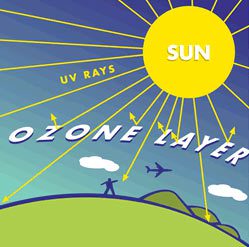 Atmospheric Winds Accelerate Ozone Layer Recovery, Protecting Life on Earth Faster Than Expected
Atmospheric Winds Accelerate Ozone Layer Recovery, Protecting Life on Earth Faster Than Expected
Research results from scientists at the National Aeronautics and Space Administration (NASA) indicate that, along with the ongoing reduction of chlorofluorocarbon (CFC) emissions that deplete the ozone layer, atmospheric winds have significantly accelerated the recovery of the ozone layer that protects life on Earth, surpassing expectations based purely on mathematical calculations.
According to NASA data, although the ozone hole over Antarctica continues to expand and has now reached 24 million square kilometers, the overall ozone layer of Earth has not declined for the past nine years, much earlier than scientific projections based on the rate of CFC reduction over the past 20 years.
Scientists have determined that the recovery of the ozone layer in the upper stratosphere of the atmosphere is entirely attributable to the decrease in CFC emissions.
However, in the lower stratosphere, the recovery of the ozone layer depends on atmospheric winds that transport ozone gas. This gas is generated at lower altitudes in the equatorial region and is carried to higher latitude areas where it is being depleted.
Computer models have confirmed this process and forecast that the Earth’s ozone layer will return to levels seen in 1980 between the years 2030 and 2070. By that time, the ozone hole over Antarctica is also expected to be filled.

















































